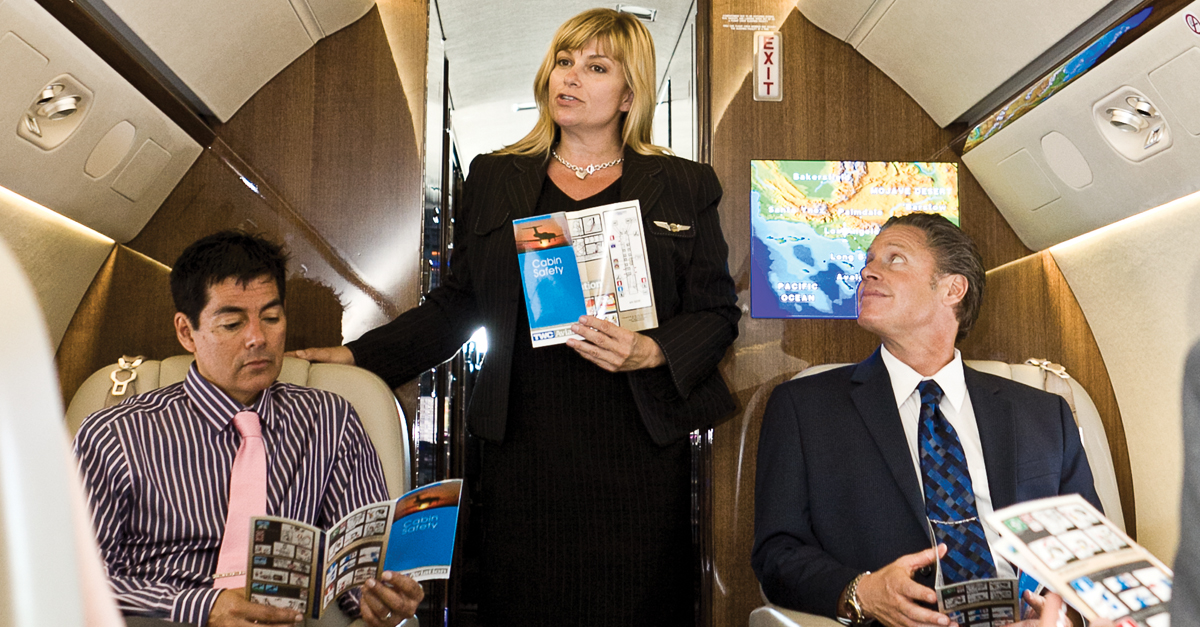

Just as pilots have flight- and duty-time limits, it’s important for cabin crews to have similar standards to mitigate fatigue and ensure safety.
may 28, 2018
Flight- and duty-time limits for pilots are designed to help ensure that flight crews are physically prepared to fly safely. It’s important to have similar standards for cabin crews. The industry is now taking a closer look at addressing fatigue among flight attendants and flight technicians, especially those who spend long days flying through numer-ous time zones.
Louisa Fisher, FlightSafety International’s program manager for cabin safety, said, “Developing proper rest procedures for flight attendants and flight technicians is critical to providing the highest level of safety for our passengers, as well as the entire flight crew.”
Fisher, who also chairs NBAA’s Flight Attendants Committee, said that with the increase in operations using ultra-long-range aircraft, Part 91 operators may have clear duty guidelines for the flight crew, but in many cases, the cabin crewmembers and flight technicians do not have similar rules.
Flight attendant and flight techni-cian fatigue is a factor in operational safety, said Karen Hall, a 20-year flight attendant for a Fortune 500 company that flies Gulfstream G650s and G550s internationally. Overseas trips flown by her company usually are seven days long, “with multiple legs that create unique demands on cabin crewmem-bers,” she said.
“En route, physical requirements of the flight can add to a flight attendant’s fatigue,” said Hall. “We regularly convert the airplane to a restaurant, to a hotel room, back to a restaurant and finally back to an airplane for arrival. At destinations, we often must take meetings with hotel staff during layover times. The industry needs to promote awareness of the physical and mental workload of the flight attendant and flight technician during these long-range flights and develop mitigation strategies to make sure cabin crews are as rested as flight crews.”
Flight technicians have additional duties to perform on these long international flights, noted Anthony Joseph, an A&P technician with both maintenance tasks and cabin safety responsibilities on Gulfstream G450 and G550 aircraft flown by another Part 91 operator.
“Typically, I’ll perform line maintenance, inspections and repairs of company aircraft,” Joseph explained. “But when assigned as a flight technician, I’ll travel aboard company aircraft, performing cabin safety attendant duties and making minor repairs in AOG situations. My major concern regarding fatigue is that there is usually no dedicated [cabin] crew rest area on flights when the pilots are typically augmented.”
Flight department managers need to advocate for mandatory rest periods for their flight technicians similar to their pilots, so they can reset their circadian rhythm, concluded Joseph. “There needs to be one standard regulation for all flight crew duty periods and minimum rest periods.”


 International Business Aviation Council Ltd.
International Business Aviation Council Ltd.